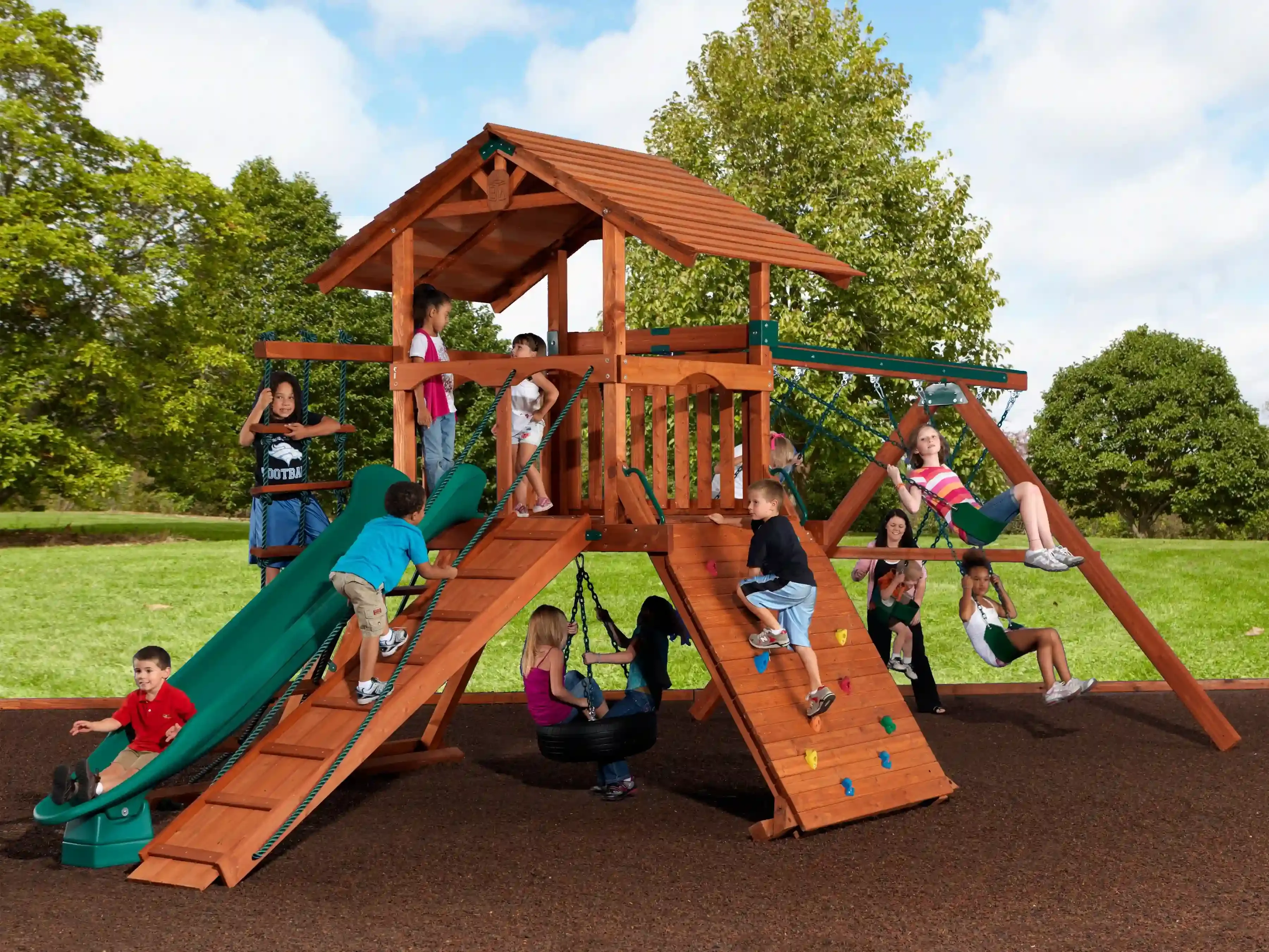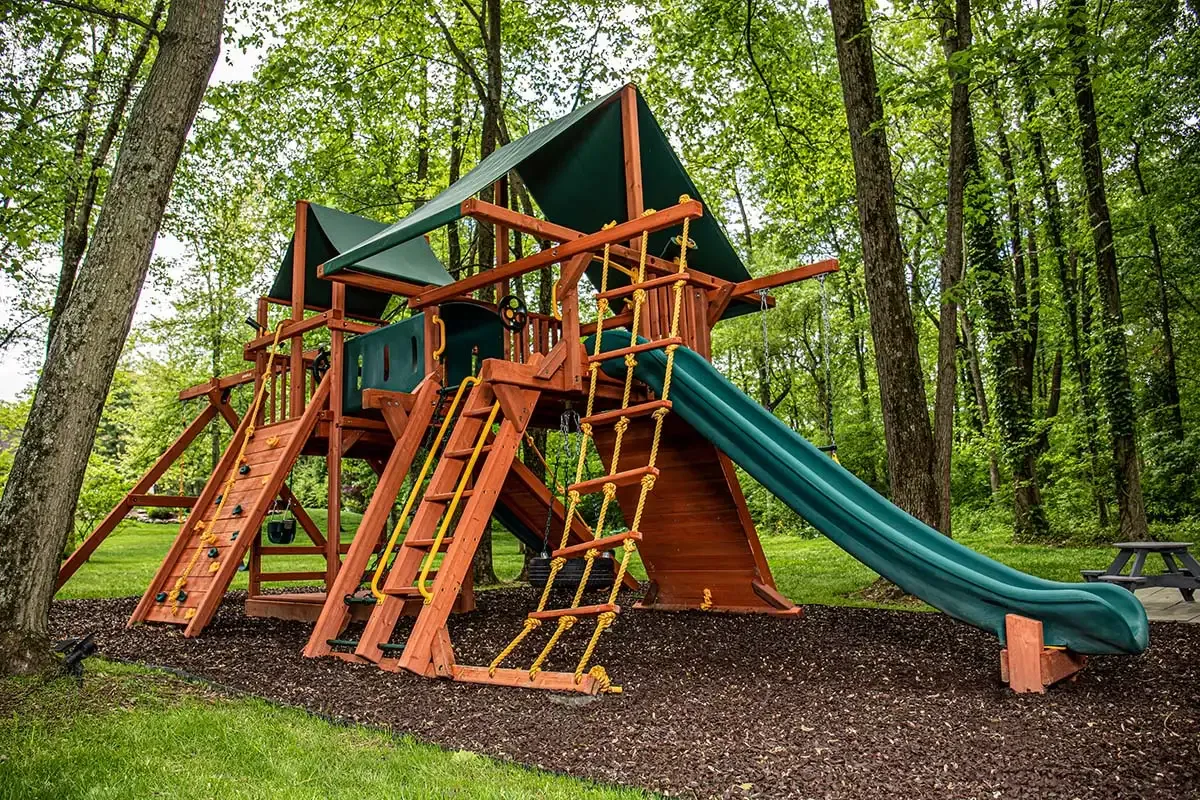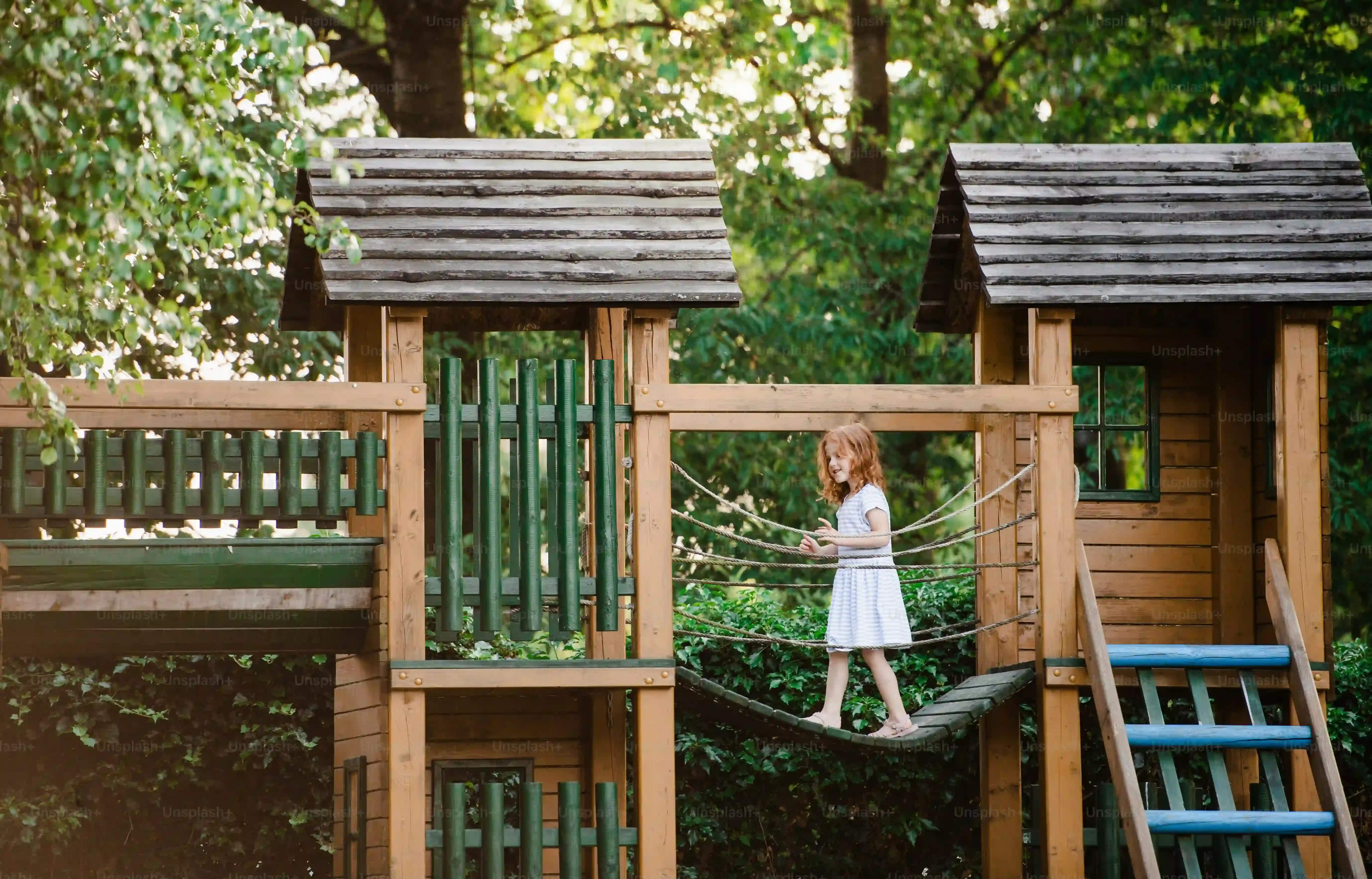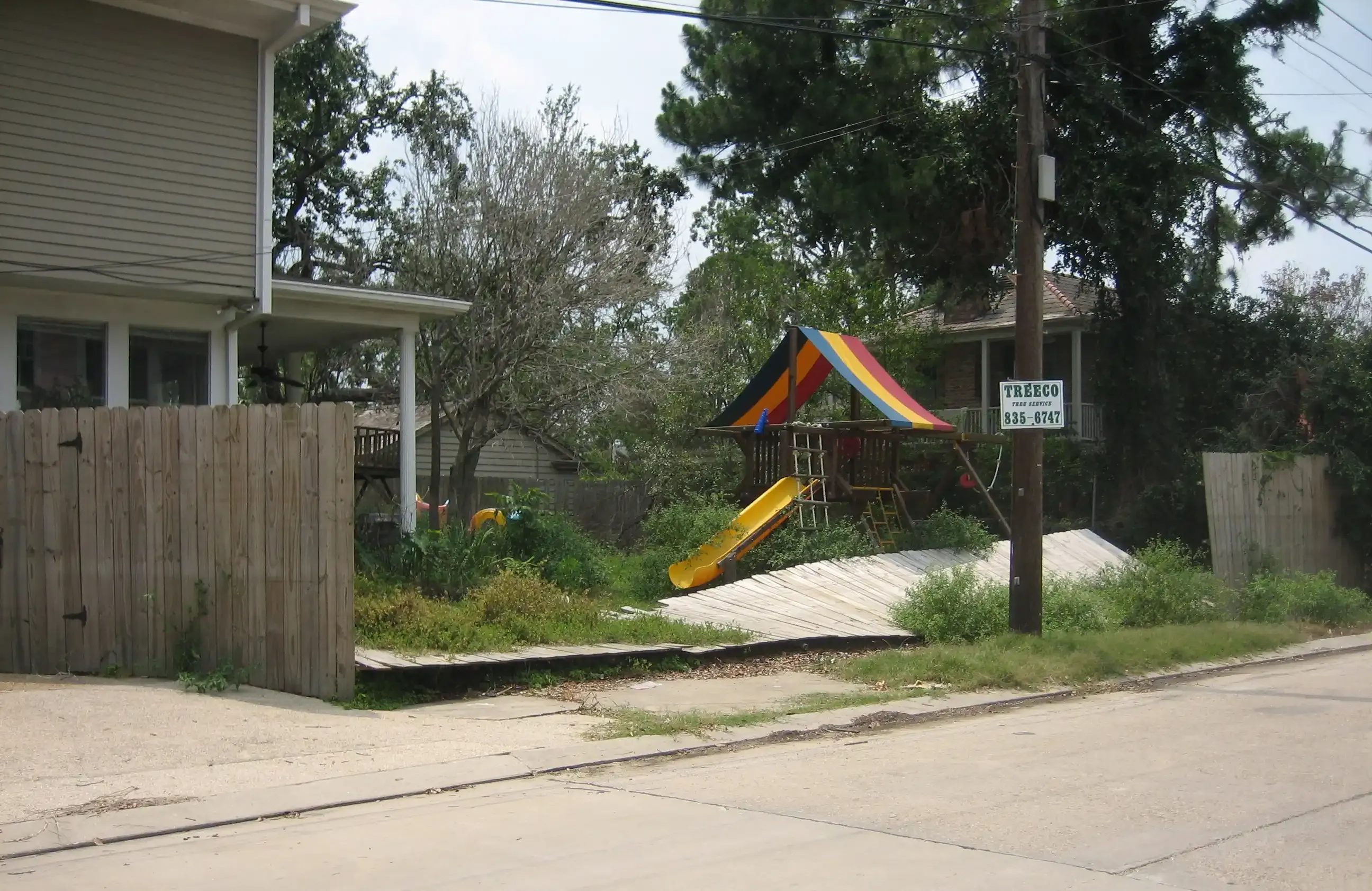Table of Contents
Remember building forts as a kid? Or maybe just swinging so high you thought you might touch the clouds? Bringing that kind of simple, screen-free joy to your own kids is probably high on your list. Awooden backyard playgroundisn't just a structure; it's a launchpad for imagination, a place where scraped knees are badges of honor, and memories are built as sturdy as the wood itself. But let's be honest, dropping a significant amount of cash and dedicating yard space to one of these requires some homework. You're likely wondering if it's worth the investment, how to pick one that won't splinter into dust after a year, and most importantly, how to keep your little adventurers safe while they're conquering the monkey bars. This isn't just about buying a kit; it's about creating a lasting piece of your family's history right outside your back door. We're here to cut through the sales jargon and help you navigate the process. We'll cover why wood makes sense, how to choose the right set for your space and budget, critical safety checks, and the simple steps to keep your investment looking good and standing strong for years of laughter and play.
Why Choose a Wooden Backyard Playground?

Why Choose a Wooden Backyard Playground?
The Unmatched Look and Feel
Let's be honest, a big, brightly colored plastic monstrosity can feel a bit... sterile. It screams "manufactured fun." Awooden backyard playground, on the other hand, just feels right. It blends into the landscape, offers a natural texture that's pleasant to touch (splinters excluded, of course, but we'll get to that), and frankly, looks a whole lot better in your yard than something that resembles a giant primary-colored Lego set. There's a timeless quality to wood. It ages gracefully, developing a character that plastic just can't replicate.
Built to Last (With a Little Help)
When you're investing in something your kids will beat on daily, durability is key. While some might argue plastic is maintenance-free, quality wood, particularly cedar or redwood, can stand up to the elements and years of enthusiastic play. We're talking about structures designed to handle roughhousing, climbing, and whatever else little humans invent. Sure, they need a bit of looking after – staining, sealing, tightening bolts – but that care pays off in a structure that can potentially outlast your kids' interest in swinging, maybe even seeing grandkids on it.
- Natural aesthetics that complement your yard
- Potential for long-term durability with proper care
- Often offers more customization options
- Feels more substantial and less "disposable"
More Than Just a Structure: It's an Investment
Thinking long-term? A well-maintained wooden set holds value better than its plastic counterparts. Plus, there's the environmental angle. Wood, when sourced responsibly, is a renewable resource. Many manufacturers use sustainably harvested lumber. You're not just buying a playground; you're potentially making a slightly greener choice. And let's not forget customization. Want to add a tire swing later? A different slide? Wooden sets often offer more flexibility for add-ons and modifications as your kids grow and their interests change. It's not a static purchase; it can evolve with your family.
Selecting the Perfect Wooden Backyard Playground for Your Space

Selecting the Perfect Wooden Backyard Playground for Your Space
Measure Twice, Buy Once (Seriously)
before you fall in love with that massive castle-stylewooden backyard playgroundyou saw online, grab a tape measure and head outside. Seriously. Measure your available space. Think about the footprint of the set itself, but also the crucial safety zone around it. That's typically six feet in all directions from the edge of the equipment. Six feet might not sound like much until you visualize a kid bailing off a swing or flying off the bottom of a slide. You need room for falls, room for running, room for general chaotic play. Don't forget to look up – are there low branches? Power lines? You'd be surprised what people overlook in the excitement. Plot it out on paper, or even use stakes and string in the yard to get a real sense of scale. Nothing's worse than a playset that looks crammed into a space or, worse, extends into a danger zone.
Matching the Set to the Tiny Humans
Who is actually going to use this thing? A set perfect for a rambunctious eight-year-old might be terrifyingly high for a cautious three-year-old. Consider the age range of your kids *now* and how they'll grow into it. Toddler swings and low slides are great for the littlest ones, but older kids will quickly get bored without monkey bars, rock walls, or taller slides. Look for sets with a good mix of features if you have a range of ages. Some sets are designed to be modular, allowing you to add components later. That initial smaller investment can grow with your kids, which is a lot smarter than buying something they'll outgrow in two years or, conversely, something they can't even use safely yet.
- Toddler swings for the smallest users
- Lower decks and slides for beginners
- Higher decks, rock walls, and monkey bars for older kids
- Consider modular designs for future expansion
Wood Quality Matters (A Lot)
Not all wood is created equal, especially when it's sitting outside getting rained on and baked by the sun. Cedar and redwood are popular choices forwooden backyard playgrounds because they naturally resist rot and insects. Pine is often used because it's cheaper, but it usually requires pressure treatment and more diligent sealing to last. Check the thickness of the lumber – flimsy boards aren't going to hold up to years of climbing and swinging. Look for solid, substantial pieces. Fasteners are also key; galvanized or stainless steel hardware resists rust better than plain steel. A playset built with cheap materials is a playset that will start looking sad and potentially unsafe sooner rather than later. Ask about the wood source and treatment process. A little research here saves a lot of headaches (and splinters) down the line.
Essential Safety Tips for Your Wooden Backyard Playground

Essential Safety Tips for Your Wooden Backyard Playground
Regular Inspections: More Than Just a Quick Look
so you've got this beautifulwooden backyard playgroundstanding tall, the kids are loving it, and you're feeling like parent of the year. Great. Now comes the part where you actually have to *keep* it safe. This isn't a one-and-done deal. Wood is a natural material; it shifts, it weathers, bolts loosen. You need to get up close and personal with this thing regularly. We're talking checking every bolt, every screw, every piece of wood for cracks, splinters, or signs of rot. Grab a wrench and tighten anything that feels even slightly loose. Look for protruding hardware that could snag clothes or skin. Are the swing hangers secure? Is the slide firmly attached? Think of yourself as the chief safety inspector, and your tiny humans are the demanding clients who will absolutely find the weak spots if you don't.
Soft Landings Matter: The Ground Beneath Their Feet
Gravity is a harsh mistress, especially when combined with enthusiastic climbing. Kids *will* fall off awooden backyard playground. It's not a maybe; it's a certainty. What they land on makes a huge difference. That perfectly manicured lawn? Not enough cushion for a fall from any height. Concrete or asphalt? Absolutely not, unless you enjoy frequent trips to the ER. You need a shock-absorbing surface extending at least six feet in all directions from the equipment. Think wood chips, mulch, sand, or engineered wood fiber (EWF). Rubber mats or tiles are another option, though often pricier. The depth matters too; check the manufacturer's recommendations, but generally, you need several inches to provide adequate protection. A soft landing zone turns a potential disaster into a minor tumble and a quick brush-off.
- Check all bolts, screws, and hardware for tightness.
- Inspect wood for splinters, cracks, or rot.
- Ensure swing hangers and slide attachments are secure.
- Remove any tripping hazards around the play area.
- Verify the depth and coverage of shock-absorbing surfacing material.
- Look for protruding hardware.
- Make sure there are no overhead obstacles like branches or wires.
Keeping Your Wooden Backyard Playground in Top Shape: Maintenance Guide

Keeping Your Wooden Backyard Playground in Top Shape: Maintenance Guide
Wash Away the Grime and Grumbles
so you've got this sturdywooden backyard playgroundthat's seen its share of sunny days and soggy afternoons. It's not going to maintain itself, sadly. The first step in keeping it looking good and lasting long is just plain old cleaning. Think of it like washing your car, but less glamorous. Algae, mildew, dirt, bird droppings – they all happen. A simple wash with a mild soap and water, maybe a soft brush, does wonders. For tougher spots, a dedicated deck cleaner designed for wood can help, but test it in an inconspicuous area first. You don't want to strip the finish or change the color unevenly. Getting the grime off isn't just about looks; it prevents organic matter from breaking down the wood fibers over time. It's the basic hygiene for your playset.
Seal the Deal: Protecting Against the Elements
Once it's clean and dry, you absolutely need to protect that wood from the relentless sun and rain. This is where sealing or staining comes in. Think of it as sunscreen and a raincoat for your playset. A good quality water sealant repels moisture, preventing rot and warping. A stain adds color (if you want it) and often contains UV inhibitors to stop the sun from turning the wood gray and brittle. Cedar and redwood have natural resistance, but even they benefit from protection. Pine, especially if pressure-treated, still needs regular sealing to prevent surface damage and check cracking. You'll likely need to do this every one to three years, depending on your climate and the product you use. Look for signs of wear – if water no longer beads up on the surface, it's time to reapply. Skipping this step is like buying a nice car and never washing or waxing it; it's just going to degrade faster.
- Clean regularly with mild soap and water.
- Use a wood cleaner for stubborn dirt or mildew.
- Apply a quality water sealant every 1-3 years.
- Consider a stain with UV protection.
- Check if water still beads on the surface – if not, reseal.
- Address any mildew or algae growth promptly.
More Than Just Lumber: The Lasting Impact
So, you've weighed the options, picked your spot, maybe even wrestled with a few stubborn bolts during assembly. Getting a wooden backyard playground isn't a set-it-and-forget-it deal; it requires thought upfront and some elbow grease down the line. But watching a kid invent elaborate games around a simple fort, or seeing them build confidence one rung at a time? That's the payoff. These structures aren't just temporary distractions; they're stages for developmental leaps and backdrops for childhood memories that actually stick. Treat it right with regular checks and maintenance, teach the kids the safety rules, and this piece of wood and hardware can stand as a pretty solid testament to investing in something tangible in an increasingly digital world. It's real play, in your own yard, and that's worth the effort.